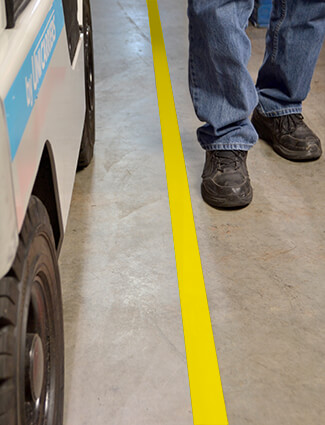Workplace Injuries: The Common, the Costly
03
February,
2023
2 MINUTE READ

Heavy boxes, wet floors, and wobbly ladders might be just a few of the daily job dangers a worker must navigate. Did you know those situations are common for workplace accidents and injuries? They are also among the costliest, according to a 2020 workplace insurance report. While some hazards are unavoidable, being injured by them can be through strong workplace communication, management and planning, and continuous training.
More than Money
There were about 3 million nonfatal workplace injuries and illnesses reported in 2019, according to the Bureau of Labor Statistics. Overexertion, falls, and struck-by hazards are among the costliest workplace injuries, according to Liberty Mutual Insurance. They are also responsible for more than 84% of nonfatal injuries that cause days away from work and costing businesses more than $59 billion per year. Here are some of the top causes of disabling injuries, their average costs to employers, and several ways to communicate safety as a prevention method.
 Handling Objects: Lifting heavy items can result in shoulder and back injuries. Place a label with the weight of items on them such as spools, pallets, tools, and boxes. Post safe lifting reminders. Highlight ladders and lifting equipment areas. Average cost per year: $14 billion.
Handling Objects: Lifting heavy items can result in shoulder and back injuries. Place a label with the weight of items on them such as spools, pallets, tools, and boxes. Post safe lifting reminders. Highlight ladders and lifting equipment areas. Average cost per year: $14 billion.- Slips and Falls: Same-level surfaces have hazards such as clutter, wet floors, and uneven walkways. Use signs to signal wet floors and clean up spills immediately. Label spill kits and containers and keep them stocked. Use floor marking for the organization of items to keep paths clear or for marking walking and working traffic areas. Average cost per year: $13 billion.
- Struck-bys or Against: Falling objects can injure and even kill a person. Post signs to remind workers to tether tools and to keep workers away from areas where materials and equipment are moving. Average cost per year: $8 billion.
- Falls from Heights: Wobbly ladders and a lack of fall protection are the biggest contributors to injuries in this category. Train workers for safe ladder use and mark ladders for their adequate use, weight limit, and height. Require fall protection on any platform, especially unguarded ones, and rooftops. Average cost per year: $6 billion.
- Poor Posture: An ankle twist, sprains, and strains are just a few examples of the assorted exertion types in this section. Average cost per year: $4.5 billion.
- Vehicle Crashes: Forklift crashes and collisions are most often caused by distracted driving. Use signs and floor marking to indicated work vehicle traffic stops, parking, and travel paths. Average cost per year: $4 billion.
- Repetitive Motions: Hand-intensive work can be strenuous to joints and smaller bones. Remind workers to use ergonomic rests, tools, exercises, and proper breaks. Average cost per year: $2 billion.
- Running Machines and Equipment: Moving machinery can cause amputations and even crushing deaths. Remind workers to use lockout tagout before maintenance, be mindful of pinch points, and more. Average cost per year: $2 billion.
Invest in Safety
Part of workers being able to execute necessary jobs safely is through total workplace vigilance. Workplaces from the top on down must support and commit to an injury-free workplace. Start by finding and fixing hazards before someone gets hurt through a job hazard analysis. Empower workers to be involved in safety decisions and to stop work when they feel it is unsafe. Require safety training on a job and teach workers about safety best practices. By planning for safety and eradicating complacency, workplaces can achieve the efficiency milestones that make other successful companies shine and keep workers injury-free.
RELATED RESOURCES

Overcoming Challenges and Connecting the Industry
Industry is utilizing various ways of communication to strengthen its grip amid the global coronavirus ...
Read
OSHA Lists Top Workplace COVID-19 Violations
OSHA has been busy this year tackling workplace compliance and safety during the coronavirus pandemic. The ...
Read
130 Years Strong, E.M. Duggan Thrives on Safety
E.M. Duggan is a fifth-generation, family owned mechanical contracting business in Massachusetts. For 130 ...
Read.png)


